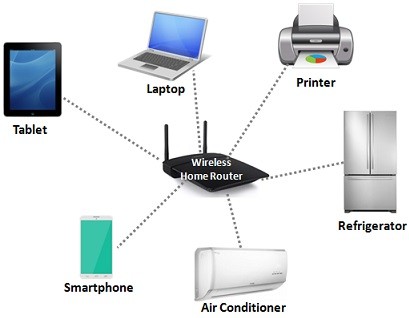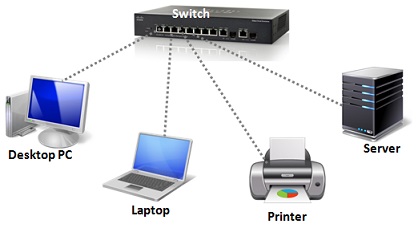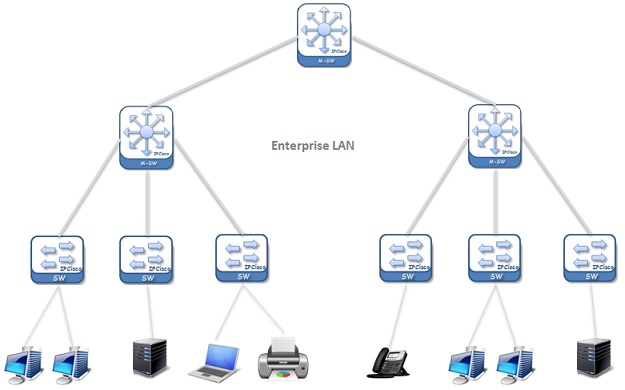- COURSES
- SPECIALS
- BLOG
- MEMBERS
- SHOP
- ABOUT
- ENROLL HERE

Table of Contents
There are three common network types according to their coverage size. These are, LANs, MANs and WANs. LAN is the smallest sized network in these three network type. LAN (Local Area Network) is a small network that is built within a small geographical area. A LAN can be your home network, your company’s network or any similar network that is consist of mostly with switches and the hosts connected to them. Beside, a LAN consist of different office equipments like printers. A LAN can consist of two computers simply, beside,it can consist of hundreds of devices. This lesson is one of the kwy lessons of entrance level network certificaiton exams like Cisco CCNA, Huawei HCIA and Juniper JNCIA.



There are various topologies that are used by LAN. These topologies can be Bus, Start, Ring, etc. We will also talk about these topologies in the network topologies article.
You can also check Collision and Broadcast Domains lesson!
To build a Local Area Network, there are some requirements. In other words, there LAN devices (switch, hub, router) and equipments in a Local Area Network. What are these requirements? These requirements are very simple that, every one who has an internet connection at home, has these.
LAN components and devices explained with examples in our other related lessos also.
LANs are the simplest network topologies. People use this simple networks for many reasons. Some of these reasons are given below:
For different places ororganizations, using this types of network has different advantages.
LANs are the networks that we use in our offices or in our home network. But beside these small networks, there are both larger or smaller network types. What rea these network types? Below, you can find them from smallest to the largest.
As you can see here, the place of Local Area Network is in the middle of the other network types. There are both smaller networks and larger networks in the above picture. If you would like to learn more about other networks, you can check the related lessons.
There are different LAN Types according to the devices inside it, underlaying architecture and the medium used in this Local area network. We can divide lans into 7 sub categories according to this information. These 7 local area network types are given below:
Now, let’s learn the details of these LAN types.
In a Client-Server LAN, there is one Server and Clients connected to this server. Here, clients are connected only to the server. There is no connection between clients.
On this type of local area network, a single centralized device is used to manage this network. But here, all the load is on one single server. This is no scalable for a large network. So, this type of lan is used for small network.
Different than client-server, peer to peer LAN provides connections between all the hosts. Each host can connect to the other host directly. With this connection, users can share data easily each other. This is the advantage of peer-to-peer local area network.
Token Ring lan is the network in which a token is used by the devices to send and receive data. According to their needs, users get these tokens in this type of network.
Another token lan type is token bus. This type of local area network provides more bandwidth than token ring. Here, connected devices are connected in a tree-based architecture. In this tyoe of network, tokens are transferred either left or right.
The most common local area network type is wired lan today. It is very useful and scalable for today’s networks. All the devices in a network are connected to a central device for example to a switch with a medium like coaxial cable, fiber cable etc. With the help of this device, hosts can communicate each other.
Today, another mostly used local area network is wireless lan. Wireless lan is the collection of the devices connected to an access point or to a home router. These devices can be a laptop, an ocean, a smartphone etc. Here, the main point is, communication is provided by wireless signals.
The last type of lans is cloud-managed LANs. This type of network is also a wireless network but the only difference is, here, a cloud platform is used to manage this network. This is the recent technology of local area networks.
There are different Local Area Network topology types. these topology types are explained in the related lesson detaily. Below, you can find these topology types:
One of the most used LAN technology is Ethernet. What is Ethernet? Ethernet is a standard in which there are standards for data formats and data transmission. It defines how data is transmitted and received between the devices like computer, hub, switch, routers etc. We can define this technology as Ethernet-based LAN. In a typical Ethernet-based LAN. Ethernet is reliable, cost-effective and scalable, making it the foundation of most wired LANs today.
There are different devices like PCs, laptops, printers, etc. which are connected to a central device like a switch via Ethernet cables like CAT5, CAT6, CAT7, CAT8, CAT9 etc.
Ethernet techology uses CSMA/CD (Carrier Sense Multiple Access with Collision Detection) protocol to manage how data is sent and avoid collisions on the network.
Ethernet technology is Layer 2 technology, a data-link technology. In this techonogy data is sent as frames. It includes MAC addresses of the source and the destination.
Ethernet supports full-duplex communication. this means that meaning devices can send and receive data simultaneously, which increases performance and efficiency.
Modern Ethernet LANs typically operate at speeds of 100 Mbps, 1 Gbps, or higher, depending on the hardware.
To learn more about Ethernet, you can visit our Ethernet Lesson.
A Local Area Network (LAN) is a network that connects computers and devices within a limited geographic area, like a house, office or campus allowing them to share resources like files, printers, and internet access.
LAN is a small network that covers a limited area, a house or a company. WAN covers large areas such as cities, countries, continentals. WAN often involve third-party carriers.
Switches, routers, hubs, network interface cards (NICs) and access points are common Loacal Area Netwrok devices. These devices are used for various purposes in a network. One of the key role of these devices are to connect devices together.
The most common LAN topologies are line, bus, star, extended star, ring and mesh topologies. Today, the star topology is most widely used, especially with Ethernet-based LANs.
Yes. A LAN can include both wired and wireless devices. If it is completely consist of wireless devices, it is called Wireless LANs (WLANs).
LAN is the smallest network type used within small area. MAN is a larger netwrok used in a campus. Laslty, WAN is the network used within a large geographical area like cities, countries, even continenatls.
Ethernet is the most wired LANs today.
Leave a Reply